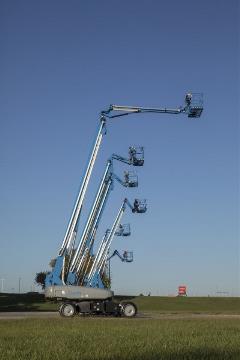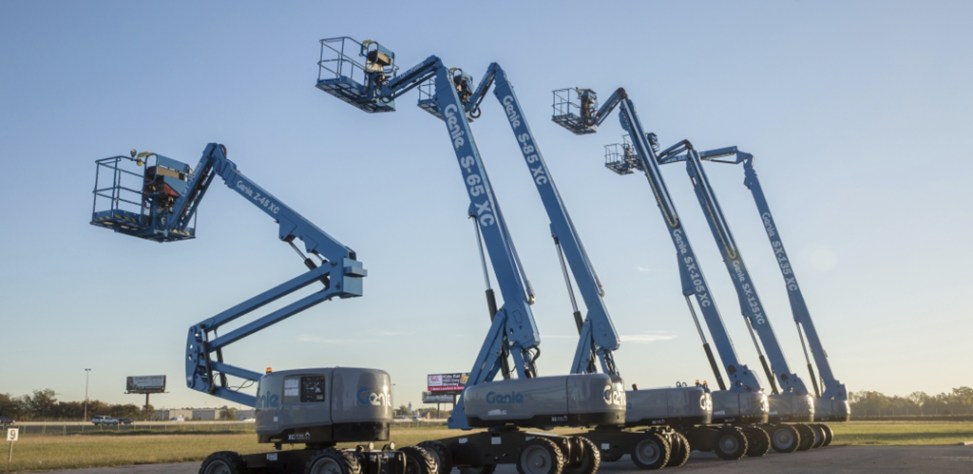Using Data for Better Rental Operations
by Galen Wickstrom - National Accounts Manager On Feb 8, 2018, 03:00 AM
Subscribe To Aerial Pros
Filter by tags
Data takes the guesswork out of running a rental operation, and it is usually just a few clicks away. From customer relationship management (CRM) tools, fleet management systems, accounting software, and external sources like the American Rental Association, it is now easier than ever to get whatever type of data you need to help forecast sales, fleet planning and developing marketing strategies to capture new customers, as well as retain existing ones.
In today’s technology-driven world, data is everywhere, and can be a bit overwhelming. Here’s a brief overview of the different uses of data that you’re already collecting so you can develop your own scorecards, statistics and company trends.
Improve Efficiencies
If you want to grow your profits, you can either rent more equipment or be more efficient as a company. Most often, the first place to start with these efficiencies is by doing a better job of tracking how your workforce spends their day. For example, when making repairs does your team spend hours searching for the right replacement part for a machine or often order the wrong one? It’s a common issue for most rental stores because of the number of manufacturers and types of equipment they must work with on a regular basis. Many manufacturers have apps and websites to help your team order the correct parts quickly, the first time.
Using systems that can talk to each other will also improve efficiencies. Too often rental companies have the same customers name entered several different systems. Finding a platform that can help with all areas of your business or separate platforms that talk to each other will reduce mistakes and provide you with more accurate information about your customers.
Better Business Decisions
 Fleet data should be the driving force for determining when to replace a machine or adding equipment to your fleet. Start by reviewing the utilization information for each equipment category. This will give you definitive information about what are your most popular types and sizes of equipment — this is one area you don’t want to trust your gut instinct. Hopefully, you’re also collecting information about those instances where you didn’t have the right type of machine available. Chart it out, and you’ll soon be able to discover trends about when different categories are in demand throughout the year, which machines are your most profitable and how many hours are being put on each machine in your fleet per month. This will help you determine what equipment you need more of, as well as what machines need to be replaced in your fleet.
Fleet data should be the driving force for determining when to replace a machine or adding equipment to your fleet. Start by reviewing the utilization information for each equipment category. This will give you definitive information about what are your most popular types and sizes of equipment — this is one area you don’t want to trust your gut instinct. Hopefully, you’re also collecting information about those instances where you didn’t have the right type of machine available. Chart it out, and you’ll soon be able to discover trends about when different categories are in demand throughout the year, which machines are your most profitable and how many hours are being put on each machine in your fleet per month. This will help you determine what equipment you need more of, as well as what machines need to be replaced in your fleet.
As machines age, you also want to determine when the most optimal time is to replace it. You want to hit that sweet spot of where a machine isn’t costing you a lot to repair and still has decent residual value. Analyzing that data, you should be able to create pretty specific rules for replacing equipment.
When it is time to purchase new equipment, data will help you determine the total cost of ownership for a machine. You need to compare acquisitions costs, estimate the maintenance expenses and parts for the life of the machine, including labor and forecast what the residual value will be when it comes time to sell a used piece of equipment. When you do this, often, you’ll find that a cheaper machine will cost you more in the long run.
Setting and Accomplishing Goals
Data-driven goal planning will help your company grow while making your customers the happiest around. Those two topics go together since a happy customer is one that is likely to do more business with you in the future. So, where do you start?
The best place to start is by tracking what’s important to customers:
- Fleet availability
- On-time delivery
- Equipment reliability
- Service call responsiveness
- Timely pick-up arrangements
- Invoicing accuracy
Establishing benchmarks for each of these areas will ensure you’re meeting the needs of your customers. Every rental cycle should be followed up with a questionnaire for your team and your customer to fill out about these areas. When you track it, you make it a priority, and when it’s a priority, your team will get better in each of these areas.
As you can see, data can be powerful for running your business. The best way to make sure you don’t get overwhelmed with all the available data is by limiting your data intake to the information that helps you improve your efficiencies, make better decisions and accomplish your goals.
Related Posts

Invest in a Good Sales Team
No matter if you are a large or small rental house, public or private company, when you are reviewing your return on invested capital (ROIC) you have the same cost-of-ownership considerations as the competition: Price, freight, availability, maintenance and repair costs, to name a few.
Continue Reading

Differentiation Strategy for Your Rental Business
In today’s rental industry, competition in the aerial marketplace is intense, with many rental options available for prospective customers.
Continue Reading

Using Telematics to Manage Your Fleet
No matter what size of aerial equipment fleet you have — from 1 to 100 machines — equipment management is something you do every day.
Continue Reading


